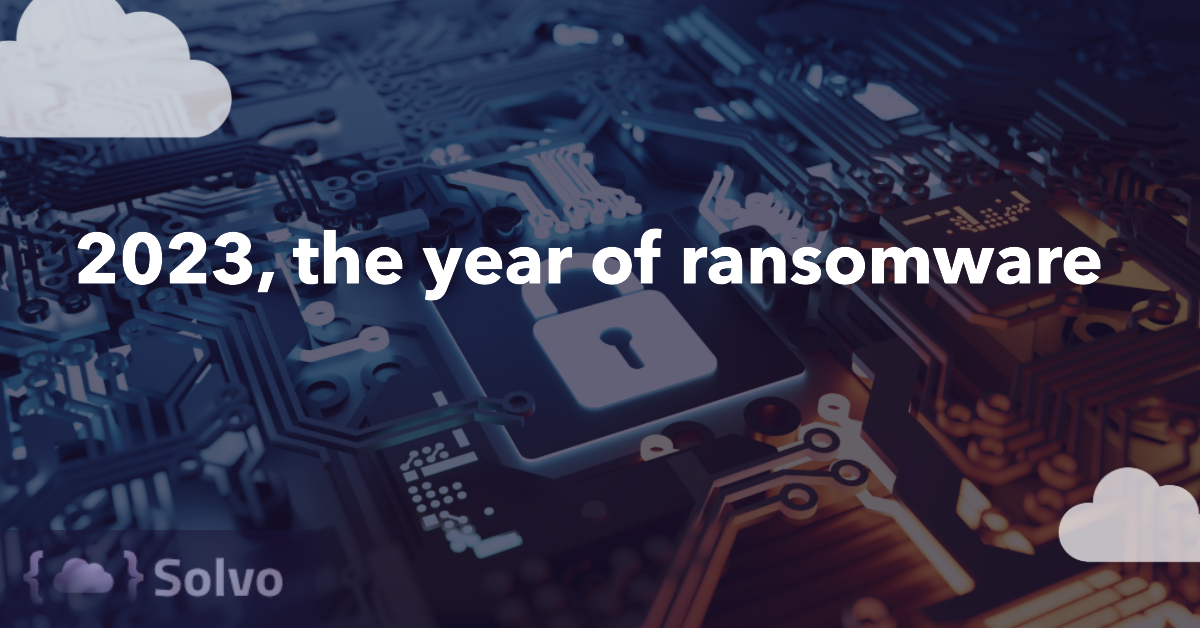As I begin to document the ransomware landscape of 2023, I recognize that the constantly changing nature of these attacks means that any momentary snapshot becomes quickly outdated. Ransomware, although not a novel threat vector, has undeniably intensified its grip this year, permeating diverse industries and platforms. What remains unchanged is the harsh reality that end users, the true victims of these incidents, often bear the brunt of these assaults, experiencing both the initial impact and prolonged repercussions without adequate compensation or support.
I will go over the three incidents that I found most interesting this year:
23andMe:
October 2023 marked a pivotal disclosure by the genetic testing giant, revealing more than just the usual Personally Identifiable Information (PII) leak. The breach extended beyond conventional data like names, addresses, and emails, encompassing sensitive healthcare information. As a provider of genetic ancestry and health testing services, the breach compromised personal reports containing predictions regarding disease carrier status and biological traits. The significance lies in this healthcare data breach occurring within a software company, not a healthcare provider. Additionally, the recent announcement of altering the Terms of Use for existing customers reflects a poor practice. Regulatory scrutiny is crucial to hold the company accountable for its breach and subsequent actions.
Tipalti:
In early September 2023, the prominent payment and accounting automation platform fell victim to the notorious ransomware group, AlphV. The breach exposed data belonging to Tipalti’s clientele, including notable companies like Roblox and Twitch. AlphV’s modus operandi diverged from mere extortion attempts directed at Tipalti; they engaged directly with the victims. Reports indicate that AlphV’s website faced disruptions due to law enforcement activities, prompting some victims to consider paying the ransom independently. Could 2024 be the year of cyber insurance?
MGM Grand:
September 2023 saw an intriguing extortion incident unfold at the Vegas hotel. Guests experienced keycard malfunctions and error messages on slot machines, signaling a ransomware attack. Similar to previous incidents in hospitals, the hotel resorted to manual operations, issuing paper receipts for cash transactions. The breach resulted in extensive Personally Identifiable Information (PII) exposure, including names, driver’s license photocopies, passports, Social Security Numbers, and more. MGM’s ten-day hiatus from digital operations, stemming from their refusal to pay the ransom, is estimated to have incurred a staggering loss of $100 million. This incident stands as a testament to the severe financial ramifications and operational disruptions caused by ransomware attacks.
To sum it up, in the tumultuous landscape of cybersecurity, 2023 witnessed a notable surge in ransomware attacks that cast a shadow over industries globally. The pervasive and insidious nature of these cyber assaults manifested in unprecedented ways, causing widespread disruptions, financial losses, and grave concerns about data security. Throughout the year, the frequency, complexity, and impact of ransomware incidents escalated, posing significant challenges to organizations across sectors.
The surge in ransomware attacks can be attributed to a confluence of factors intertwined within the global landscape. The global economy’s intricacies and vulnerabilities have provided a breeding ground for cybercriminals seeking financial gains. Geopolitical tensions and economic strife among nation-states have inadvertently fueled these cyber threats. Economic struggles or sanctions on certain countries have potentially incentivized state-sponsored cyber warfare or financially motivated attacks as a means of circumventing financial constraints. Moreover, the proliferation and rapid evolution of technology have created numerous blind spots and vulnerabilities. The overload of interconnected systems, the swift adoption of new technologies, and the subsequent difficulty in securing these expansive networks have created lucrative opportunities for cybercriminals to exploit weaknesses and launch ransomware assaults. These multifaceted factors have collectively contributed to the surge in ransomware attacks, underscoring the urgency for comprehensive cybersecurity measures and global cooperation to mitigate these escalating threats.
The repercussions of these attacks were profound, extending far beyond the immediate financial toll. Many businesses faced operational disruptions, reputational damage, and legal liabilities as they grappled with the fallout of data breaches and system compromises. The ransom demands imposed immense financial strains on targeted entities, with some choosing to pay the ransom to restore operations, further fueling the incentive for cybercriminals to continue their illicit activities.
To combat the escalating ransomware threat, organizations scrambled to bolster their cybersecurity defenses. Proactive measures such as robust network security protocols, regular data backups, employee training on cybersecurity best practices, and the adoption of advanced threat detection systems gained heightened importance. The emphasis on creating a resilient cybersecurity infrastructure became paramount, with organizations investing significant resources in fortifying their systems against potential attacks.
Looking ahead to 2024, the battle against ransomware is poised to intensify further. The landscape indicates a continued emphasis on strengthening cybersecurity frameworks, fostering collaborations between public and private entities, and leveraging innovative technologies to combat evolving threats. Predictions suggest a concerted effort towards the development of more sophisticated defensive mechanisms, including the integration of artificial intelligence and machine learning into cybersecurity protocols. Moreover, the rise of cyber insurance and regulatory interventions may reshape how organizations approach risk mitigation and incident response strategies in the face of ransomware attacks. As stakeholders endeavor to stay ahead in this cyber arms race, the year ahead will likely witness a concerted effort toward building more resilient digital defenses to safeguard against the ever-evolving ransomware menace.
